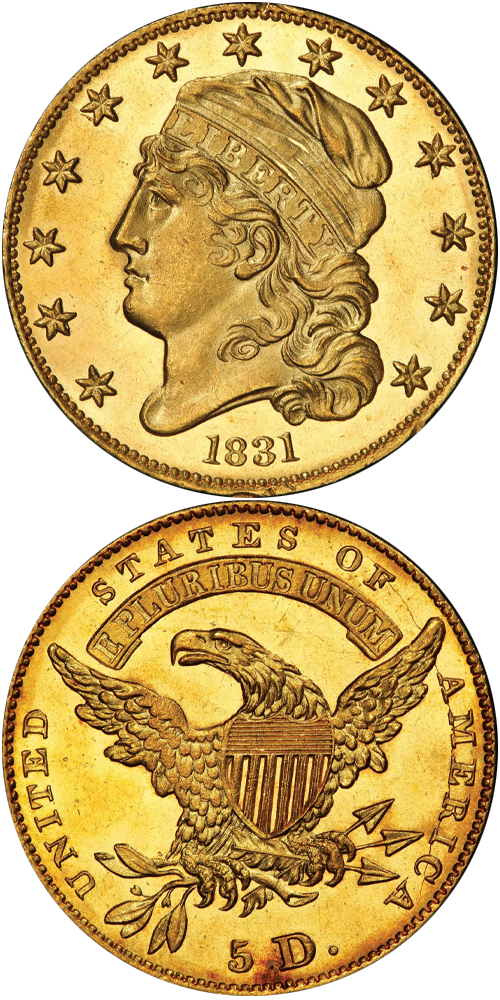1831 Capped Head Left Half Eagle
Large 5D
Chief Engraver William Kneass' modification of the Capped Head Left half eagle in 1829 adapted the design for use on new coinage equipment recently introduced in the Mint. Specifically, the close collar now allowed the Mint to produce coins of uniform diameter. Kneass' work on the half eagle did not affect the central design elements, but he added a beaded border and raised rim and reduced the size of the stars and lettering around the peripheries. This Reduced Diameter variant of the Capped Head Left half eagle is even rarer and more challenging to collect than its Large Diameter predecessor. Perhaps surprisingly, the combined mintage for the six issues of the later type (1829 Small Date, 1830, 1831, 1832, 1833 and 1834) is actually higher than that of the Large Diameter series of 1813 to mid-1829. The later date issues, however, were exported and melted to a greater degree, with far fewer coins being hoarded domestically and escaping destruction after the weight change for the half eagle introduced in 1834. The result is that all dates and die varieties of the Reduced Diameter Capped Head Left half eagle are very scarce to exceedingly rare and seldom encountered outside of a few major numismatic auctions and other gatherings.
With only 22 to 30 coins believed extant (per John W. Dannreuther, 2006), the 1831 BD-2 variety is decidedly in the rare category, even more so than such already elusive varieties in this series as the 1830 BD-2, 1832 BD-1, 1833 BD-1, 1834 BD-1 and 1834 BD-2. Both die marriages of the 1831 issue employ the same obverse. The reverse of BD-2 has the Large D in the denomination 5 D., likely a leftover from 1829, albeit previously unused in coinage.
The example to the left was sold by Stack's Bowers Galleries in the D. Brent Pogue Part IV Auction, where it realized $235,000.






